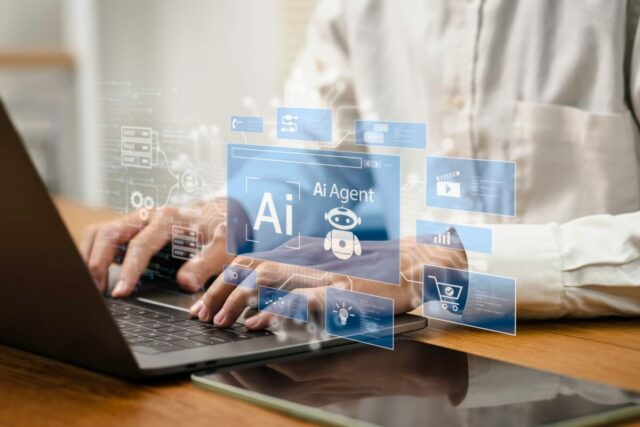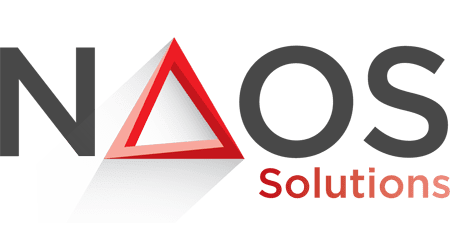The most forward-thinking customer service companies aren’t just keeping pace with change—they’re writing the playbook for tomorrow’s success while others scramble to understand today’s challenges. If you’re wondering how industry leaders are already positioning themselves for 2026 and beyond, you’re in precisely the right place to discover their strategic blueprint.

This comprehensive analysis reveals the innovative approaches, technologies, and workforce models that elite customer service organizations are implementing right now to stay ahead of rapidly evolving customer expectations. We’ll explore how these pioneers are transforming reactive support into strategic advantage, creating sustainable competitive differentiation that will define market leadership in the years ahead.
The rules of customer service are being rewritten—this article helps you read the next chapter before it’s published.
SHIFT FROM REACTIVE TO STRATEGIC: A MINDSET REVOLUTION IN THE CX INDUSTRY
The customer service landscape is undergoing its most significant transformation in decades. What was once a cost center focused on damage control has evolved into a strategic revenue driver that shapes brand perception and customer loyalty. This fundamental shift represents more than an operational change—it’s a complete reimagining of the role of customer service in business success.
Strategic customer service means being proactive rather than reactive, data-led rather than intuition-driven, and experience-focused rather than transaction-oriented. Leading companies have embraced this philosophy, recognizing that every customer interaction is an opportunity to strengthen relationships and drive business growth.
Market Growth and Industry Transformation
The numbers tell a compelling story of this transformation. The global customer service market continues to expand impressively, with the customer service outsourcing sector alone valued at $78.75 billion. This growth reflects not just increased demand, but a fundamental shift in how businesses view customer service investments.
Research reveals that 79% of companies now view customer experience as a source of revenue, rather than just a cost. This shift in perspective is driving unprecedented investment in customer service technologies, processes, and talent development. Organizations that previously viewed support as a necessary expense are now discovering its potential as a competitive differentiator and growth engine.

The transformation is particularly evident in customer expectations. According to HubSpot research, 78% of customer service representatives agree that customer expectations are higher than they’ve ever been. These elevated expectations aren’t just about faster response times—customers demand personalized, empathetic, and proactive support experiences that demonstrate genuine care for their success.
Technology Integration Strategies
Leading customer service companies are implementing comprehensive technology strategies that go far beyond simple automation. Their approach encompasses four critical areas of innovation:
- Generative AI Integration represents the most significant technological advancement in customer service. Unlike traditional chatbots, generative AI systems can understand context, maintain conversational flow, and provide personalized responses at scale. Forward-thinking companies are integrating these systems not as customer-facing solutions, but as agent empowerment tools that enhance human capabilities rather than replace them.
- Cloud-First Infrastructure has become essential for organizations preparing for 2026. The pandemic accelerated this transition, but strategic companies are going beyond basic cloud migration. They’re building distributed, scalable systems that support hybrid workforce models while maintaining security and performance standards. Research from Deloitte indicates that 75% of service leaders intend to transition to cloud-based contact centers to meet the evolving needs of their customers better.
- Advanced Analytics capabilities are transforming how companies understand and serve their customers. Predictive analytics allow organizations to identify potential issues before they become problems, while real-time sentiment analysis helps agents adjust their approach during live interactions. These insights enable truly proactive customer service that addresses needs before customers even recognize them.
- Omnichannel Integration has evolved from buzzword to business necessity. Leading companies have moved beyond simply offering multiple channels to creating seamless, connected experiences across all touchpoints. Customers now use an average of nine different channels to engage with a single company, and 86% expect conversations to move seamlessly between channels without repeating information.

FUTURE-READY TACTICS FROM LEADING CUSTOMER SERVICE COMPANIES
The most innovative customer service organizations are implementing sophisticated strategies that address both current challenges and future opportunities. These tactics represent a departure from traditional approaches, focusing on intelligent collaboration between human and artificial intelligence while addressing emerging customer behaviors and expectations.
The Rise of Hybrid AI-Human Teams
The future of customer service isn’t about choosing between AI and human agents—it’s about creating powerful partnerships that leverage the strengths of both. Leading companies have moved away from “AI-first” approaches that often frustrate customers, instead developing nuanced deployment strategies that enhance human capabilities.
Intelligent Routing systems now use sophisticated algorithms to analyze incoming requests and determine the optimal handling approach. AI handles initial triage and simple transactions, gathering context and resolving straightforward issues instantly. However, these systems seamlessly escalate complex or emotionally charged interactions to human agents who receive comprehensive context about the customer’s situation and emotional state.
AI-Augmented Agents represent the next evolution of customer service technology. Rather than replacing human representatives, AI provides real-time insights, sentiment analysis, and suggested responses that empower agents to deliver more effective support. Research indicates that AI-powered tools can reduce issue resolution time by up to 30% while freeing agents to focus on relationship building and complex problem solving.
Collaborative Intelligence creates systems where AI and humans work together throughout interactions rather than in sequence. This approach enables dynamic adjustments based on customer needs, emotional state, and the complexity of the issue at hand. The result is more natural, practical support that combines AI’s analytical capabilities with human empathy and creative problem-solving.
Strategic Response to Bot Fatigue
The phenomenon of “bot fatigue” has become a critical strategic consideration for customer service leaders. With 63% of customers reporting that their last chatbot interaction failed to resolve their problem, companies must address this growing frustration while still leveraging the benefits of automation.
Choice-Centric Design ensures customers always have clear, barrier-free access to human agents. Rather than forcing customers through multiple bot interactions, leading companies provide transparent options that respect customer preferences. This approach acknowledges that while 82% of U.S. customers would rather interact with a human than a chatbot, automation can still provide value when implemented thoughtfully.
Context-Aware Escalation systems utilize sophisticated monitoring to identify when human intervention is required. These systems analyze conversation patterns, sentiment indicators, and resolution success rates to identify optimal escalation points. When implemented effectively, they prevent customer frustration while ensuring human agents receive comprehensive context about the customer’s journey and emotional state.
Value-Driven Outsourcing Over Cost-Cutting
The most successful customer service companies have fundamentally reimagined their approach to outsourcing. Rather than viewing it purely as a cost-reduction strategy, they’re leveraging outsourcing partnerships as drivers of innovation and growth. This shift represents a strategic evolution that positions outsourcing as a capability extension rather than a budget line item.
End-to-End CX Services encompass complete lifecycle customer experience management. Strategic outsourcing partners don’t just handle support tickets—they contribute to customer journey mapping, experience design, and continuous improvement initiatives. This comprehensive approach ensures a consistent brand experience while accessing specialized expertise that might be difficult to develop internally.
Innovation Partnerships focus on collaborative relationships that drive business outcomes, rather than simply meeting service-level agreements. These partnerships bring fresh perspectives, technological expertise, and best practices from across industries. Companies that adopt this approach often uncover new opportunities for customer engagement and revenue growth.
Agile Service Models provide flexible, scalable solutions that adapt to changing business needs. Rather than rigid contracts and fixed capacity, these models offer dynamic scaling, specialized skill deployment, and rapid response to market changes. This flexibility becomes increasingly valuable as businesses navigate uncertain economic conditions and evolving customer expectations.
COMMON BLIND SPOTS HOLDING COMPANIES BACK
Despite widespread recognition of the strategic importance of customer service, many organizations continue to struggle with implementation challenges that limit their effectiveness. These blind spots often stem from legacy thinking, organizational silos, and insufficient investment in foundational capabilities that enable advanced customer service strategies.
Lack of System Integration
One of the most persistent challenges facing customer service organizations is the fragmentation of their technology ecosystem. Many companies have accumulated multiple point solutions over time, resulting in disconnected systems that hinder agent productivity and compromise the quality of the customer experience.

Fragmented Customer Data across different systems prevents agents from accessing comprehensive customer information during interactions. This fragmentation forces customers to repeat information, leads to inconsistent service experiences, and limits the organization’s ability to identify patterns and opportunities for improvement.
Disconnected Communication Channels create customer experience gaps that undermine omnichannel strategies. When systems don’t communicate effectively, customers may receive conflicting information or experience service delays as agents manually transfer information between platforms.
Limited Visibility into customer journeys prevents organizations from understanding the full scope of customer experiences. Without integrated systems, companies struggle to identify pain points, measure effectiveness, and optimize their service delivery approach.
Siloed CX and Marketing Data
The separation between customer experience and marketing data represents a significant missed opportunity for most organizations. This siloed approach prevents companies from creating truly integrated customer experiences and limits their ability to leverage customer service interactions for business growth.
Missed Personalization Opportunities occur when marketing teams lack access to customer service interaction data. Support conversations often reveal valuable insights about customer preferences, pain points, and satisfaction levels that could enhance marketing effectiveness and customer retention strategies.
Inconsistent Messaging across touchpoints confuses customers and undermines brand coherence. When marketing and customer service teams operate independently, customers may encounter conflicting information or experience jarring transitions between marketing and support interactions.
Limited Customer Lifetime Value Optimization results from the inability to connect marketing investment with customer service outcomes. Companies miss opportunities to identify high-value customers, tailor retention strategies, and optimize resource allocation across the entire customer lifecycle.
Failing to Implement AI Projects Successfully
While AI adoption in customer service is accelerating rapidly, many implementations fail to deliver expected results. Industry research suggests that a substantial percentage of AI projects will fall short of expectations in 2025; however, opportunities abound for companies that implement strategic approaches to AI deployment.
- Unrealistic Expectations often doom AI projects from the start. Organizations may expect immediate, dramatic improvements without investing in proper planning, training, and change management. Successful AI implementation requires realistic timelines, clear success metrics, and organizational commitment to supporting the transformation process.
- Poor Data Quality undermines the effectiveness of AI systems. Machine learning algorithms require high-quality, consistent data to function properly. Organizations that haven’t invested in data governance and quality management often discover that their AI systems produce unreliable or biased results.
- Insufficient Change Management prevents organizations from realizing AI benefits even when the technology functions correctly. Successful AI implementation requires comprehensive training, process redesign, and cultural change that many organizations underestimate or neglect.
Strategic Mitigation Approaches for successful AI implementation include:
- Realistic ROI Roadmaps with clear measurement frameworks help organizations set appropriate expectations and track progress effectively. These roadmaps should include both short-term efficiency gains and longer-term strategic benefits.
- Data Quality Management ensures that AI systems receive high-quality information to function effectively. This includes data governance policies, quality monitoring systems, and ongoing maintenance processes.
- Phased Implementation approaches allow organizations to learn and adapt as they deploy AI capabilities. Rather than attempting wholesale transformation, successful companies implement AI gradually, building expertise and confidence over time.
- Risk Management protocols address potential issues, including bias, privacy concerns, and transparency requirements. Proactive governance helps organizations avoid common pitfalls while maintaining customer trust and regulatory compliance.

WHAT YOU CAN DO TODAY TO BE READY FOR 2026
The path to 2026 customer service excellence begins with strategic actions you can implement immediately. While the complete transformation will take time, leading companies are building foundational capabilities now that will position them for success in the rapidly evolving customer service landscape.
Workforce Evolution and Talent Strategy
The customer service workforce of 2026 will look dramatically different from today’s teams. Organizations that begin preparing now will have significant advantages in attracting, developing, and retaining the talent needed for future success.
Distributed Workforce Models combine remote, hybrid, and traditional operations to maximize flexibility and access to talent. Research from TTEC suggests that companies should adopt a hybrid model that combines physical and remote work to maximize diversification in skills, resources, and locations. This approach provides the flexibility needed to deploy resources quickly in response to changing demand patterns.

The benefits of distributed models extend beyond crisis preparedness. Companies can access talent from broader geographic areas, reduce real estate costs, and provide employees with greater work-life balance. However, successful implementation requires investment in technology infrastructure, security protocols, and management training.
AI-Ready Agent Development requires comprehensive training programs that prepare agents to work effectively with AI systems. Rather than replacing human skills, AI augmentation demands new competencies, including technology collaboration, complex problem-solving, and emotional intelligence. Organizations should begin developing these capabilities now to ensure their workforce can effectively leverage emerging technologies.
Security Policy Evolution becomes critical as distributed workforces handle sensitive customer information from various locations. Forward-thinking companies are implementing multi-factor authentication, VPN technologies, and monitoring systems that maintain security without compromising productivity. Regular training and clear policies help remote agents understand their responsibilities in protecting customer data.
Empathy-Focused Hiring prioritizes emotional intelligence alongside technical skills. As AI handles more routine transactions, human agents will increasingly focus on complex, emotionally sensitive interactions that require genuine empathy and relationship-building capabilities. Companies should adjust their hiring criteria and assessment processes to identify candidates with these essential human skills.
Agentic AI and Autonomous Resolution
Gartner’s groundbreaking prediction that agentic AI will autonomously resolve 80% of common customer service issues by 2029 represents a fundamental shift in customer service operations.
Agentic AI differs from traditional automation in that it possesses the capability to act autonomously and complete tasks. Rather than simply providing information or following pre-programmed scripts, these systems can navigate websites, negotiate on behalf of customers, and proactively identify and resolve issues before customers become aware of them.
Industry leaders are preparing for this transition through strategic approaches:
- Gradual AI Capability Expansion involves methodically increasing AI autonomy as systems prove their reliability and effectiveness. Rather than attempting wholesale replacement of human agents, successful companies are expanding AI capabilities in specific areas while maintaining human oversight and intervention capabilities.
- Human Oversight Systems maintain human validation and control over AI decision-making. Even as AI systems become more autonomous, human agents retain ultimate responsibility for customer outcomes and can intervene when situations require judgment, empathy, or creative problem-solving.
- Complex Issue Specialization focuses human agents on high-value, complex interactions that require uniquely human capabilities. As AI handles routine transactions, human agents become “super agents” who specialize in relationship building, complex problem solving, and emotionally sensitive situations.
Data Security and Privacy Leadership
With increasing regulatory scrutiny and customer awareness of privacy issues, data security has become a competitive differentiator rather than just a compliance requirement. Research indicates that 96% of businesses expect outsourcing providers to assume responsibility for data security risks, highlighting the critical importance of robust security frameworks.
Advanced Security Infrastructure includes multi-factor authentication, VPN technologies, and comprehensive monitoring systems that protect customer data without impeding agent productivity. Companies that invest in security infrastructure now will be better positioned to handle evolving threats and regulatory requirements.
Compliance Leadership involves proactive regulatory compliance frameworks that anticipate future requirements rather than simply meeting current standards. Organizations should develop governance structures that can adapt quickly to new regulations while maintaining operational efficiency and effectiveness.
Data Analytics Capabilities enable advanced insights while maintaining privacy protection. Companies must strike a balance between the desire for customer understanding and privacy requirements, implementing systems that provide valuable insights without compromising individual privacy rights.

The most successful organizations are treating data security as a strategic advantage, using their security leadership to build customer trust and differentiate themselves from competitors who view security as merely a compliance burden.
CONCLUSION: ARE YOU THINKING LIKE A 2026 CUSTOMER SERVICE COMPANY?
The transformation of customer service is not a distant future possibility—it’s happening now. The companies that will dominate in 2026 are those taking strategic action today, building the capabilities, technologies, and talent strategies that will define tomorrow’s competitive advantage.
The evidence is clear: customer service has evolved from a cost center to a revenue driver, from reactive problem-solving to proactive relationship building, from siloed operations to integrated customer experience management. Organizations that embrace this evolution will thrive, while those clinging to outdated approaches will struggle to meet rapidly evolving customer expectations.
The strategic blueprint outlined in this article—from hybrid AI-human teams to distributed workforce models, from agentic AI preparation to data security leadership—represents the roadmap that industry leaders are already following. These aren’t experimental concepts but proven strategies that forward-thinking companies are implementing to build sustainable competitive advantages.
The question isn’t whether these changes will occur, but whether your organization will lead or follow. The companies are already thinking like 2026 customer service organizations are making strategic investments in technology, talent, and partnerships that will compound over time. They’re building the foundation for customer relationships that will drive growth, loyalty, and market leadership for years to come.
As you evaluate your own customer service strategy, consider partnering with organizations that already embody this forward-thinking approach. NAOS CX specializes in helping businesses navigate this transformation, providing the expertise, technology, and strategic vision needed to build world-class customer experiences that drive business success.
Are you ready to transform your customer service approach for the opportunities ahead? Contact our customer experience experts today to discover how strategic outsourcing can accelerate your journey toward 2026 excellence while delivering immediate improvements to your customer relationships and business outcomes.

